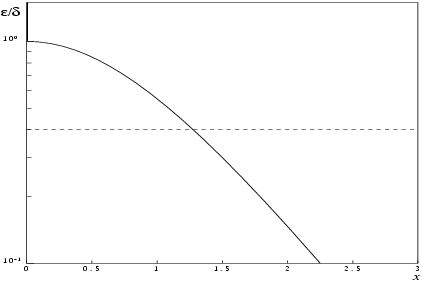S10AAF calculates an approximate value for the hyperbolic tangent of its argument, .
For
it is based on the Chebyshev expansion
where
.
For
(see the
Users' Note for your implementation for value of
)
For
,
to within the representation accuracy of the machine and so this approximation is used.
None.
If
and
are the relative errors in the argument and the result respectively, then in principle,
That is, a relative error in the argument,
, is amplified by a factor approximately
, in the result.
Figure 1
It should be noted that this factor is always less than or equal to
and away from
the accuracy will eventually be limited entirely by the precision of machine representation.
None.

